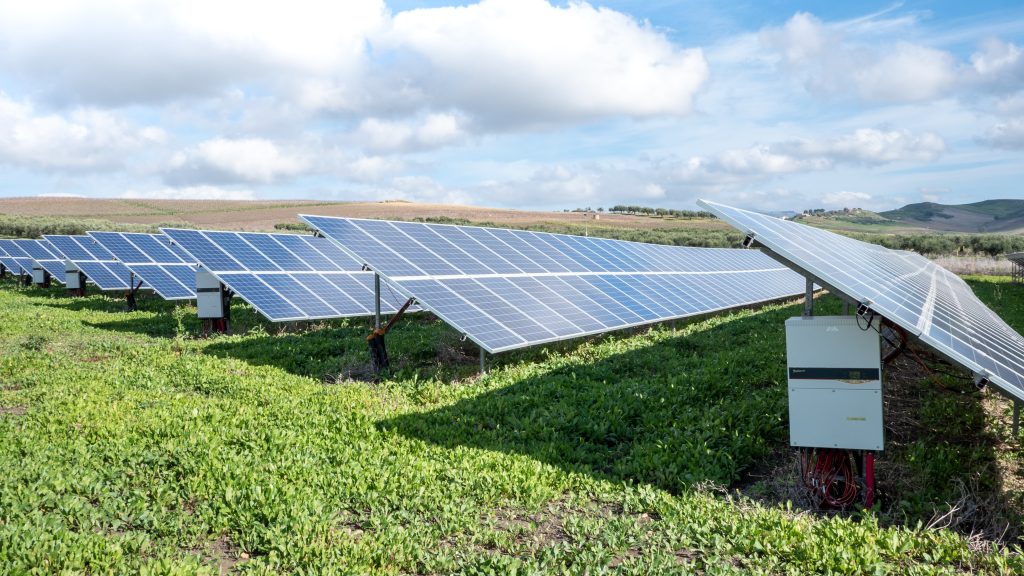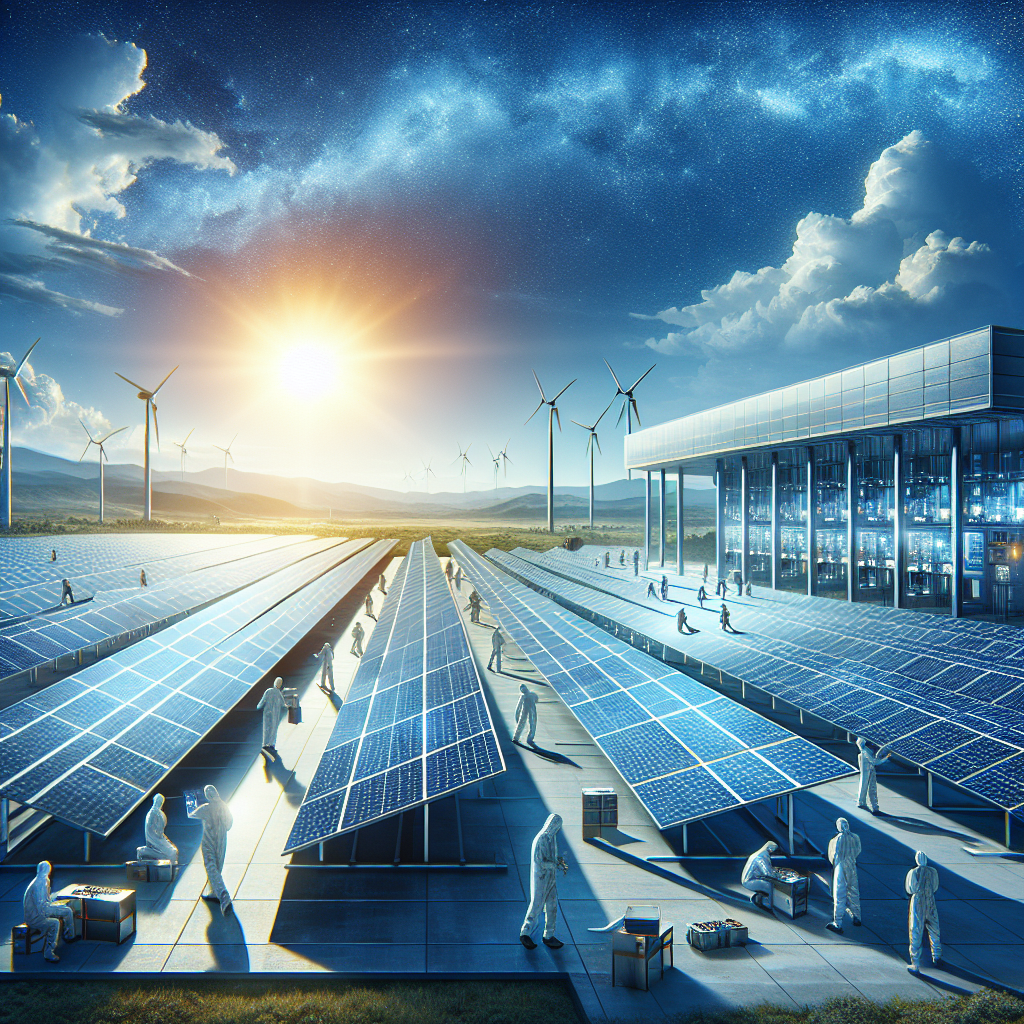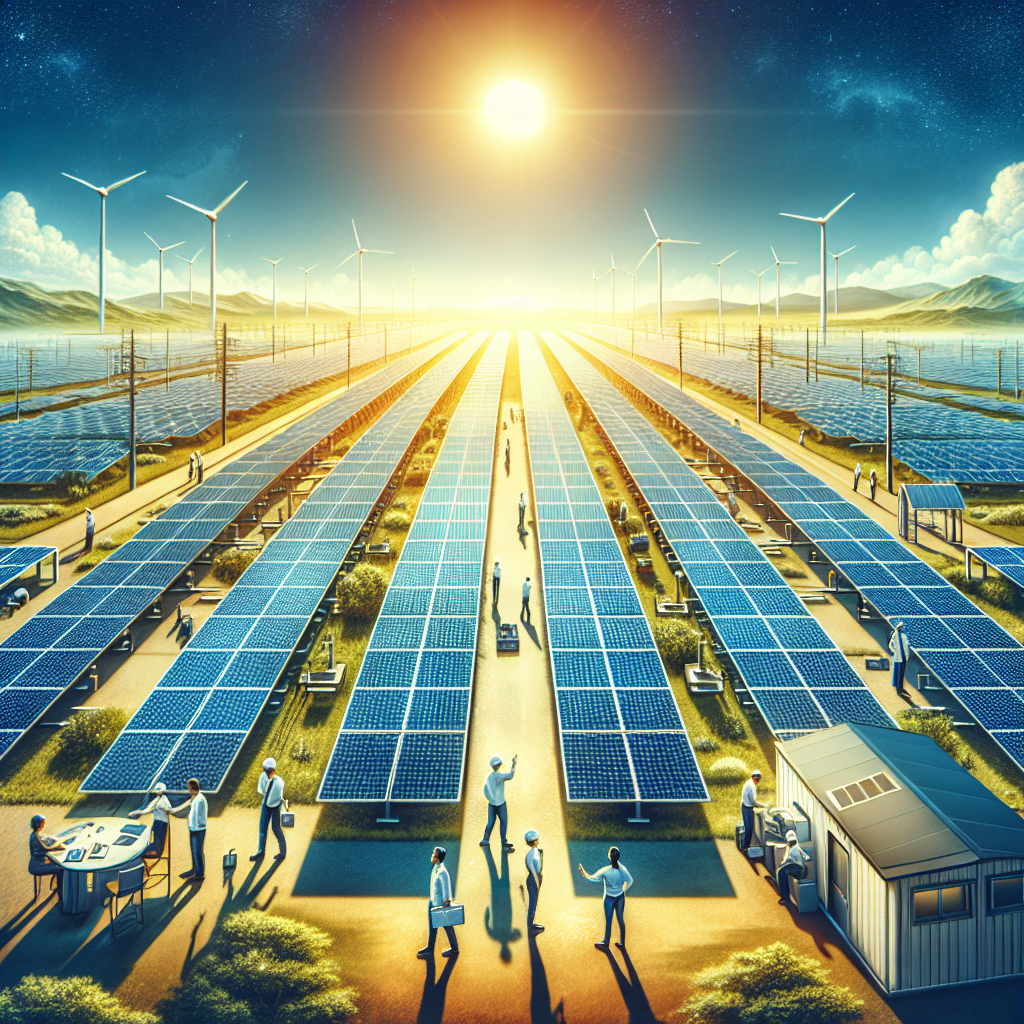How To Start A Solar Farm
As an Amazon Associate, I earn from qualifying purchases, at no additional cost to you. Disclaimer
Thinking about starting a solar farm? Look no further! In this article, I will guide you through the process of establishing your very own solar farm, from understanding the basic principles to navigating the legal requirements and securing financing options. By the end of this article, you’ll have all the knowledge and confidence you need on how to start a solar farm to embark on this exciting and eco-friendly venture. Let’s harness the power of the sun and make a positive impact on our planet together!

Understanding the Basics of Solar Energy
Solar energy is a renewable energy source that harnesses the power of the sun to create electricity. It is a clean and sustainable alternative to traditional fossil fuels, making it a popular choice for individuals, businesses, and governments seeking to reduce their carbon footprint and reliance on nonrenewable resources. By understanding the basics of solar energy, you can make informed decisions about starting your own solar farm.
Defining solar energy
Solar energy is the energy obtained from the sun’s radiation. This energy can be converted into electricity through the use of solar panels, which are made up of photovoltaic (PV) cells that absorb sunlight and produce direct current (DC) electricity. This DC electricity is then converted to alternating current (AC) electricity using an inverter, making it compatible with the electrical grid or for direct use.
Benefits of solar energy
There are numerous benefits to harnessing solar energy. First and foremost, solar energy is a renewable and virtually inexhaustible resource, unlike fossil fuels such as coal, oil, and natural gas. By utilizing solar power, we can reduce our dependence on these nonrenewable resources and help mitigate the impacts of climate change. Solar energy is also a clean source of energy, producing zero greenhouse gas emissions during operation. Additionally, solar power can provide energy independence and stability, as it is not subject to price fluctuations like fossil fuels.
How solar power works
The process of generating electricity from solar energy involves several key components. When sunlight hits a solar panel, the PV cells within the panel absorb the photons and release electrons, creating a flow of electricity. This DC electricity is then converted to AC electricity through an inverter, enabling it to be used to power homes, businesses, or delivered back into the electrical grid. To store excess electricity for use during cloudy days or at night, solar farms may incorporate energy storage systems such as batteries.
Types of solar energy systems
Solar energy systems can be categorized into two main types: photovoltaic (PV) systems and solar thermal systems. PV systems, which are more commonly used in solar farms, directly convert sunlight into electricity using semiconducting materials. On the other hand, solar thermal systems use mirrors or lenses to concentrate sunlight onto a receiver, generating heat that can then be used to generate electricity or provide hot water. PV systems are typically more practical and cost-effective for solar farm applications.
Market Research and Business Planning
Successfully launching and operating a solar farm requires thorough market research and comprehensive business planning. By conducting in-depth analysis and formulating a solid plan, you can position yourself for success in the competitive solar power industry.
Scope of the solar power industry
Before delving into the market research, it is crucial to understand the scope and potential of the solar power industry. Solar energy has experienced significant growth in recent years, driven by favorable government policies, decreasing costs of solar equipment, and increasing environmental awareness. The global solar energy market is projected to continue expanding, providing ample opportunities for new entrants.
Researching solar farm competition
To gain a competitive edge, it is essential to research existing solar farms in your target market. Analyze their business models, pricing strategies, customer base, and overall market share. By understanding the strengths and weaknesses of your competitors, you can identify areas where you can differentiate yourself and offer unique value propositions to customers.
Identifying your target market
Identifying your target market is crucial for a successful solar farm business. Consider factors such as geographic location, energy consumption patterns, and local government policies and incentives. Residential, commercial, or industrial customers may have different energy needs and preferences, so tailoring your services and marketing efforts to specific target segments can help maximize your business’s success.
Formulating your business plan
A well-crafted business plan serves as a roadmap for your solar farm’s success. It should include a detailed analysis of the market, competitive landscape, and your target customers. Additionally, your business plan should outline your financial projections, investment requirements, and a timeline for project execution. A solid business plan will not only guide your strategic decisions but also help attract potential investors or secure financing for your solar farm venture.

Legal and Regulatory Considerations
Before embarking on your solar farm journey, it is crucial to navigate the legal and regulatory landscape to ensure compliance and avoid potential obstacles.
Understanding energy regulations
Solar farm operations are subject to various energy regulations and policies, which can vary depending on the country or region. Familiarize yourself with the relevant laws, such as grid interconnection rules, net metering policies, and renewable portfolio standards. It is also important to stay informed about any updates or changes to the regulatory framework that may impact your solar farm operations.
Securing necessary permits and licenses
To operate a solar farm, you will need to obtain permits and licenses from the appropriate regulatory bodies. These may include environmental permits, construction permits, and utility permits. Engage with local authorities and regulatory agencies to understand the specific requirements and processes involved in obtaining these permits. Having all the necessary approvals in place before commencing your solar farm activities will ensure a smooth and legal operation.
Intellectual property considerations
When developing your solar farm, it is essential to consider intellectual property (IP) rights. This includes protecting any unique technologies, processes, or innovations associated with your business. Conduct a thorough IP search to ensure that your solar farm’s design and functional elements do not infringe on existing patents, trademarks, or copyrights. Consult with an intellectual property attorney to understand the best strategies for safeguarding your intellectual assets.
Navigating zoning and civic codes
Zoning and civic codes dictate land-use regulations and restrictions, which may impact the location and design of your solar farm. Consult with local zoning authorities to understand the specific zoning requirements and any restrictions related to solar farm operations. Additionally, be mindful of any aesthetic considerations, noise limitations, or setback requirements that may apply. Navigating these codes and regulations can help you avoid potential conflicts and ensure compliance with local ordinances.
Land Acquisition and Evaluation
Choosing the right location for your solar farm is crucial for maximizing its energy production and long-term profitability. Proper land acquisition and evaluation are vital steps in developing a successful solar farm.
Determining space requirements
Before acquiring land, assess your solar farm’s space requirements based on the expected capacity and generation goals. Factors such as the size and quantity of solar panels, inverter stations, and energy storage systems need to be considered. By understanding your solar farm’s space requirements, you can identify suitable land parcels that meet your needs.
Evaluating potential sites
When evaluating potential sites for your solar farm, several factors should be taken into account. These include solar irradiation levels, land availability and suitability, proximity to electrical infrastructure, and access to transportation networks. Conduct detailed site assessments and consider consulting with solar energy experts to ensure you choose a location that optimizes solar insolation and minimizes shading or other environmental limitations.
Negotiating lease or purchase
Once you have identified suitable land, negotiate either a lease or purchase agreement with the landowner. Lease agreements provide flexibility and a lower upfront financial commitment, while purchasing the land grants full ownership. Ensure that the terms of the agreement address factors such as land use rights, easements, and any future development provisions. Engage with legal professionals to draft and review the agreement to protect your interests.
Considering environmental impact
Consider the environmental impact of your solar farm and take steps to minimize any negative consequences. Conduct environmental impact assessments to identify potential ecological, visual, or cultural impacts. Implement measures such as land restoration, habitat preservation, or landscape screening to mitigate these impacts. Taking a proactive approach to environmental considerations will not only benefit the local ecosystem but also enhance the reputation and sustainability of your solar farm.

Solar Farm Design and Equipment Acquisition
Designing an efficient and effective solar farm layout and selecting the right equipment are crucial to maximize energy production and optimize the return on investment.
Designing the solar farm layout
Designing an optimal solar farm layout requires careful planning and consideration of various factors. These include available land area, topography, shading analysis, and the desired orientation and tilt of the solar panels. The layout should aim to minimize shading, maximize solar irradiation capture, and facilitate efficient maintenance and operations. Consult with solar farm design specialists or utilize advanced software tools to create a layout that best suits your site and goals.
Selecting solar panels and inverters
Selecting high-quality solar panels and inverters is essential for the long-term performance and reliability of your solar farm. Consider factors such as efficiency, durability, warranties, and compatibility with your design and operational requirements. Research reputable manufacturers and consult with experts to determine the most suitable options for your specific needs. Procure solar panels and inverters that meet recognized industry standards and have a proven track record of performance.
Installing energy storage systems
Incorporating energy storage systems into your solar farm can provide numerous benefits, including increased grid stability and the ability to store excess energy for later use. Evaluate different energy storage technologies, such as lithium-ion batteries or flow batteries, based on their storage capacity, lifespan, efficiency, and cost. Assess the financial viability and potential revenue streams associated with energy storage, taking into account factors such as demand response programs or time-of-use pricing.
Considering future expansion
Consider the potential for future expansion when designing your solar farm. A well-planned layout should allow for scalability and modular expansion. This includes leaving sufficient space for additional solar panels or energy storage systems, as well as ensuring adequate electrical infrastructure to support future growth. Taking a forward-thinking approach to design will position your solar farm for seamless expansion and increased energy generation capacity as demand or regulations evolve.
Construction and Installation
After completing the planning and design phases, it is time to bring your solar farm to life through construction and installation processes.
Hiring a contractor or self-installation
Decide whether you will hire a contractor or opt for self-installation. Hiring a reputable solar construction contractor can ensure that the construction process is carried out efficiently and adheres to safety standards. Self-installation may be an option for experienced individuals or companies with an in-house team possessing the necessary expertise. Whichever route you decide, ensure that the construction and installation activities align with local building codes and regulations.
Preparing the site
Preparing the construction site involves clearing vegetation, leveling the land, and installing necessary infrastructure such as access roads and fencing. Ensure that all necessary permits and environmental protection measures are in place before commencing any ground-disturbing activities. Coordinate with local utility companies to ensure proper connection points and addresses for grid interconnection. Proper site preparation is crucial for creating a safe and efficient construction environment.
Installing solar panels and electrical system
Installing solar panels in accordance with the approved layout and design is a critical step in the construction process. Align the panels correctly, ensuring they are securely mounted and wired for proper electrical connectivity. Follow industry best practices and safety guidelines to minimize the risk of damage and ensure optimal performance. Simultaneously, install the electrical system, including the inverter stations, transformers, and the necessary cabling for grid connection.
Completing final inspections and tests
Before commissioning your solar farm, conduct thorough inspections and tests to ensure that all components are functioning properly and in compliance with relevant regulations and safety standards. Inspections may include electrical tests, grounding checks, and verification of the installed equipment against design specifications. Once all necessary inspections and tests have been passed, obtain the required certifications and approvals from local authorities before proceeding to the next phase.

Financing Your Solar Farm
Obtaining the necessary financial resources to fund your solar farm project is a crucial aspect of realizing your vision.
Outlining initial costs
Prepare a detailed cost analysis outlining the various expenses associated with your solar farm project. This includes land acquisition or lease costs, equipment procurement, construction and installation expenses, legal and regulatory fees, and any other overhead costs. Create a realistic budget that takes into account both upfront capital expenditure and ongoing operational expenses.
Securing loans or investors
Seeking financial support from banks, private investors, or venture capitalists is a common approach to fund solar farm projects. Develop a compelling business case and present it to potential investors to secure loans or equity financing. Highlight the unique value propositions of your solar farm, along with the projected return on investment and potential revenue streams. Engage with financial institutions and potential investors to negotiate favorable terms and establish mutually beneficial partnerships.
Exploring government grants and subsidies
Government grants and subsidies are available in many countries to incentivize the adoption of renewable energy sources, including solar power. Research and identify relevant grant programs, tax incentives, or feed-in tariffs that may be applicable to your solar farm project. Determine the eligibility criteria, application process, and timing to ensure you can capitalize on these financial incentives. Engage with governmental agencies or renewable energy associations to seek guidance and assistance in navigating the available programs.
Calculating payback and profits
A thorough financial analysis is essential to understand the payback period and potential profits associated with your solar farm venture. Consider factors such as the cost of electricity generated, revenue from power purchase agreements, and the impact of incentive programs on your financial projections. Calculate the return on investment, accounting for the initial capital expenditure, ongoing operational costs, and revenue generation over the lifespan of your solar farm. This analysis will help you assess the viability and profitability of your project.
Operation and Maintenance
Once your solar farm is up and running, ongoing operation and maintenance are crucial to ensure optimal performance, longevity, and maximum returns.
Hiring and training staff
Ensure that you have a skilled and qualified team to oversee the operations and maintenance of your solar farm. This may include hiring solar technicians, electricians, and site supervisors. Train your staff on proper safety protocols, equipment maintenance procedures, performance monitoring, and troubleshooting techniques. Establish a comprehensive training program to keep your team up to date with the latest industry developments and best practices.
Monitoring system performance
Monitor the performance of your solar farm regularly to identify any anomalies or inefficiencies promptly. Utilize monitoring software and hardware systems to track key performance indicators such as energy production, electrical efficiency, and equipment health. Analyze the data collected to identify potential issues and take corrective actions promptly. Regular performance monitoring will help maximize energy generation and minimize downtime, leading to improved profitability.
Planning for regular maintenance and repairs
Develop a proactive maintenance plan to ensure the continued optimal operation of your solar farm. This includes periodic inspections, cleaning of solar panels, and maintenance of electrical components. Establish partnerships with reputable maintenance service providers to handle routine maintenance and repairs. Promptly address any identified issues to prevent further damage and ensure uninterrupted electricity generation. Regular maintenance will maximize the lifespan of your equipment and protect your investment.
Preserving and upgrading your farm over time
As the solar power industry continues to evolve, it is essential to stay abreast of technological advancements and industry trends. Explore opportunities for system upgrades or technology retrofits that can enhance the efficiency and performance of your solar farm. Regularly evaluate your operational processes, energy management strategies, and equipment to identify areas for improvement. By continuously upgrading and preserving your solar farm, you can maintain a competitive edge and achieve long-term success.

Marketing and Customer Acquisition
Building a strong brand and effective marketing strategy are vital for attracting customers to your solar farm and ensuring long-term success.
Building a brand identity
Establishing a strong brand identity will differentiate your solar farm from competitors and build trust with potential customers. Develop a compelling brand name, logo, and visual identity that aligns with your business values and unique selling propositions. Craft a clear and consistent brand messaging strategy that communicates the environmental and economic benefits of solar energy. Build brand awareness through targeted marketing campaigns and community engagement initiatives.
Creating a marketing plan
Develop a comprehensive marketing plan that outlines your target customers, key messaging, and marketing tactics. Identify the most effective channels for reaching your target audience, such as online advertising, social media platforms, or local events. Leverage digital marketing strategies to showcase your solar farm’s value proposition, testimonials from satisfied customers, and success stories. Measure the effectiveness of your marketing efforts and adapt your strategies based on feedback and market trends.
Developing customer relationships
Nurturing strong customer relationships is crucial for long-term business success. Provide exceptional customer service by promptly addressing inquiries, providing accurate information, and offering ongoing support. Cultivate a sense of community among your customers through newsletters, educational workshops, or customer appreciation events. Regularly engage with your customers to gather feedback, understand their evolving needs, and identify opportunities for upselling or referrals.
Expanding your customer base over time
Maximize your solar farm’s potential by expanding your customer base over time. Develop targeted marketing campaigns to reach new customer segments, such as businesses or organizations with sustainability goals. Partner with local installers or homebuilders to offer integrated solar energy solutions. Consider incentivizing referrals or offering competitive pricing to attract new customers. Continuously analyze market trends and adjust your strategies to position your solar farm as a leader in the industry.
Exiting and Possible Future Steps
Evaluating the success and potential exit strategies is essential for long-term business planning. Additionally, keeping an eye on possible future steps and staying informed about industry trends is important for growth and adaptation.
Evaluating success and potential exit strategies
Regularly evaluate the performance and profitability of your solar farm to assess its success. Analyze financial metrics, customer satisfaction, and overall market position. Based on this evaluation, consider potential exit strategies, such as selling the solar farm to interested buyers or partnering with larger energy companies for expansion. Carefully weigh the financial returns and long-term goals when considering exit strategies to ensure a smooth transition and maximize your return on investment.
Considering selling or leasing your solar farm
Selling or leasing your solar farm can provide an opportunity to exit the industry while benefiting from the value you have created. Explore potential buyers or lessees who can take over operational and maintenance responsibilities. Conduct proper due diligence and engage with professionals experienced in solar farm transactions to ensure a fair and smooth transfer of ownership or lease rights. Leasing your solar farm may also provide a steady stream of income while retaining ownership of the asset.
Planning for potential expansion
If your solar farm venture proves successful, there may be opportunities for expansion. Keep an eye on market trends, technological advancements, and governmental policies that may create favorable conditions for growth. Evaluate potential expansion options, such as acquiring additional land or developing solar projects in new geographic markets. Develop a robust expansion plan that considers market dynamics, financial feasibility, and potential risks to ensure a strategic and sustainable growth trajectory.
Staying informed about industry trends and technology
To remain competitive and adapt to changing market dynamics, it is essential to stay informed about industry trends and emerging technologies. Regularly attend industry conferences, workshops, and webinars to network with industry professionals and gain insights into the latest developments. Stay updated on upcoming policy changes, technological breakthroughs, and evolving consumer preferences. By staying informed and embracing innovation, you can position your solar farm for long-term success in the dynamic renewable energy landscape.
In conclusion, starting a solar farm involves understanding the basics of solar energy, conducting thorough market research, navigating legal and regulatory considerations, acquiring and evaluating suitable land, and carefully planning the design and equipment acquisition. The construction and installation phase must adhere to safety standards and inspections, while financing considerations are pivotal to secure the necessary capital. Once operational, focusing on maintenance, marketing, and customer relationships will ensure steady growth and viability. Evaluating exit strategies, potential expansion, and staying informed about industry trends will further contribute to long-term success in the solar farm industry.

